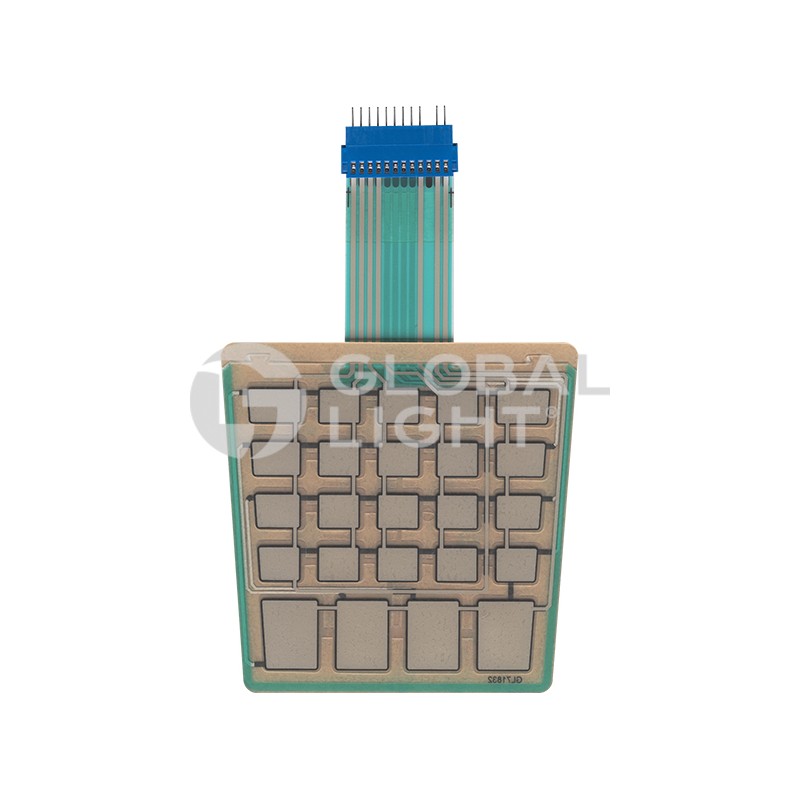Choosing the Right Membrane Switch for Your Business Needs
Choosing the Right Membrane Switch for Your Business Needs
Blog Article
Recognizing Membrane Layer Switches: The Key to Resilient and Dependable Controls

What Are Membrane Layer Switches?
Membrane switches are an innovative solution in the realm of interface innovation, incorporating performance and style flawlessly. These tools work as a user interface between customers and electronic systems, incorporating numerous components right into a small format. Generally constructed from versatile, thin layers of materials, membrane layer switches are created to react to touch, allowing users to interact with equipment and electronic gadgets successfully.
The key elements of a membrane switch consist of a published circuit layer, visuals overlay, and a spacer layer that stops unplanned activation. The visuals overlay can be customized to reflect brand name identity or customer preferences, improving appearances while guaranteeing use. Membrane switches are frequently used in numerous applications, including clinical devices, customer electronics, and industrial devices, owing to their toughness and resistance to ecological factors such as moisture and dust.
One of the key benefits of membrane layer switches is their ability to endure wear and tear, making them ideal for high-traffic atmospheres. Additionally, they are light-weight and call for marginal room, enabling cutting-edge layouts in item advancement. Overall, membrane layer switches over stand for a sensible and effective selection for modern electronic interfaces, weding technology with user-centric design principles.
How Membrane Switches Over Job
The procedure of membrane layer changes depend upon a straightforward yet effective mechanism that converts individual input into electronic signals. These switches contain several layers, commonly consisting of a graphic overlay, a spacer layer, and a circuit layer. When an individual presses the switch, the leading layer flaws, allowing a conductive aspect in the circuit layer to make contact with a corresponding conductive pad on the bottom of the visuals overlay. This contact closes the circuit and sends a digital signal to the tool, showing that the button has been turned on.
The layout of membrane layer buttons can vary, however they typically integrate domes or responsive elements to offer feedback to the individual, improving the overall experience - membrane switch. The products used in membrane layer switches, such as polyester or polycarbonate, add to their toughness and resistance to ecological aspects, consisting of dampness and dust. Moreover, the published circuits are normally encapsulated, which shields them from wear and tear over time.
Benefits of Membrane Buttons

Furthermore, membrane layer switches are recognized for their resilience. Constructed from robust materials, they are resistant to dirt, wetness, and physical wear, which significantly extends their life expectancy compared to standard mechanical buttons. This resilience makes them especially ideal for high-traffic atmospheres and applications needing durability.
One more significant benefit is the simplicity of cleaning and maintenance. The smooth surface area of membrane changes reduces dust build-up and is typically unsusceptible spills, making them ideal for settings that require frequent sanitization.
Furthermore, membrane buttons supply a structured account, causing a thinner design that can be integrated right into numerous devices without including bulk. This feature not web only improves the aesthetic charm yet likewise contributes to a much more ergonomic product style.
Applications of Membrane Layer Switches
User-friendly and functional, membrane layer switches discover applications throughout a large range of industries, including medical devices, customer electronic devices, and industrial equipment. In the medical field, these switches are essential to gadgets such as diagnostic equipment, client monitoring systems, and infusion pumps, where reliability and ease of cleaning are crucial. Their ability to maintain and withstand rough environments capability makes them excellent for such applications.

In consumer electronic devices, membrane switches are used in products like microwaves, washing equipments, and remote controls - membrane switch. Their sleek style enables intuitive interface, improving the overall customer experience while offering sturdiness and resistance to put on and tear
Commercial tools likewise takes advantage of membrane layer buttons, specifically in control panels for equipment and automation systems. These buttons supply security against dust and wetness, making sure constant efficiency in tough environments. Furthermore, their personalized attributes allow producers to tailor them to specific operational demands, enhancing efficiency and performance.
Picking the Right Membrane Layer Change
When picking a membrane button, it is vital to think about various variables that influence efficiency and viability for particular applications. The primary considerations consist of environmental problems, responsive responses, toughness, and layout requirements.
First, assess the operating environment; switches subjected to wetness, chemicals, or severe temperature levels require certain materials to make sure longevity and performance. Next, review the need for tactile comments. Depending on customer communication, some applications may gain from a tactile response to verify activation, while others may choose a non-tactile design for visual reasons.
Sturdiness is one more essential aspect; membrane switches ought to be created to hold up against frequent usage, influences, and abrasion. Ensure the selected switch can withstand the expected lifecycle, specifically in high-usage scenarios.

Conclusion
In conclusion, membrane layer changes serve as crucial parts in the style of dependable and sturdy control systems throughout various markets. The flexibility of membrane switches over permits for customized options that meet certain address functional demands, enhancing their value in modern technology.
Membrane layer switches stand for an essential element of contemporary interface design, mixing capability with durability in various applications.Membrane layer switches are a sophisticated option her explanation in the realm of customer interface modern technology, combining functionality and design flawlessly. Typically created from flexible, slim layers of products, membrane layer buttons are designed to respond to touch, allowing users to interact with machinery and digital gadgets properly.
The design of membrane switches can vary, yet they often incorporate domes or tactile aspects to offer feedback to the customer, improving the overall experience.In final thought, membrane switches serve as essential components in the design of sturdy and dependable control systems throughout various markets.
Report this page